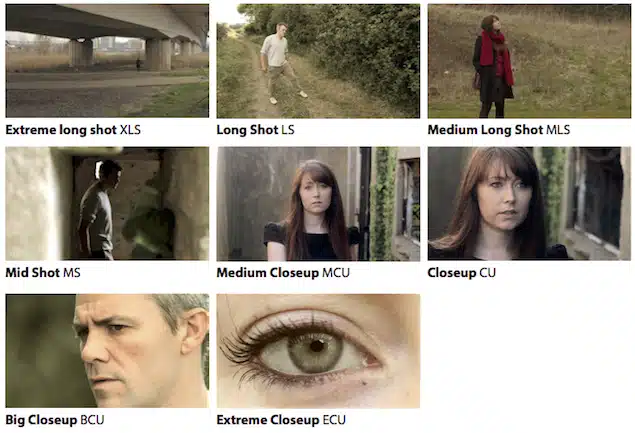Mastering Cinematic Shot Sizes and Camera Angles
Mastering Cinematic Shot Sizes and Camera Angle
Understanding camera shot sizes and angles is essential for creating excellant visuals in filmmaking and photography. Shot sizes decide how much of a subject or scene is in frame, while camera angles affect the way an audience sees the subject.
Camera Shot Sizes
1. Extreme Long Shot (ELS)
- Description: Shows a vast landscape or wide view of a scene.
- Example: A shot of a desert with a small figure of a traveler in the distance, emphasizing the vastness of the setting.
- Use: Great for establishing location or setting a story's mood.
2. Very Wide Shot (VWS)
- Description: Provides a broader view of an environment, like a street.
- Example: Capturing a busy city street with people and cars moving around.
- Use: Often used to show the environment before introducing characters.
3. Long Shot (LS) or Wide Shot (WS)
- Description: Frames the entire body of the subject and their surroundings.
- Example: A person walking through a field, with the entire field visible in the background.
- Use: Helps show a character’s actions and how they interact with the environment.
4. Medium Long Shot (MLS) or Medium Wide Shot (MWS)
- Description: Frames the subject from the knees up.
- Example: A character leaning on a car with the surrounding street visible.
- Use: Balances focus on both the character and their surroundings.
5. Medium Shot (MS)
- Description: Frames the subject from the waist up.
- Example: Two characters talking at a table, with their upper bodies visible.
- Use: Common for conversations and character interactions.
6. Medium Close-Up (MCU)
- Description: Frames the subject from the chest or shoulders up.
- Example: A teacher giving a speech, focusing on facial expressions and gestures.
- Use: Emphasizes expressions and emotions.
7. Close-Up (CU)
- Description: Focuses on a specific part of the subject, like the face.
- Example: A close-up of a character’s face showing shock or joy.
- Use: Highlights details and emotions intimately.
8. Extreme Close-Up (ECU) or Macro Shot
- Description: Zooms in on a very small part of the subject.
- Example: A close-up of someone’s eyes filling with tears.
- Use: Perfect for emphasizing intense emotions or details.
Camera Angles
1. Eye Level
- Description: Camera is at the subject’s eye level.
- Example: Two friends talking at the same height, giving a neutral view.
- Effect: Creates a natural, everyday perspective.
2. Low Angle
- Description: Camera is below the subject, looking up.
- Example: A superhero shot from below, making them look strong.
- Effect: Adds power or dominance to the subject.
3. High Angle
- Description: Camera is above the subject, looking down.
- Example: A child playing on the ground, shot from above, making them look small.
- Effect: Makes the subject appear weaker or vulnerable.
4. Bird’s-Eye View
- Description: Directly overhead, looking down.
- Example: A view of a crowded market from above, showing all the stalls and people.
- Effect: Gives a unique perspective, showing a larger environment.
5. Dutch Angle (Oblique or Tilted Angle)
- Description: Camera is tilted to create a diagonal frame.
- Example: A scene in a suspense movie, tilted to show a character’s unease.
- Effect: Adds tension or disorientation.
6. Over-the-Shoulder (OTS)
- Description: Positioned behind one character, looking over their shoulder.
- Example: Two characters talking, with the camera over one’s shoulder.
- Use: Often used in conversations.
7. Point of View (POV)
- Description: Shows the scene from a character’s perspective.
- Example: A character looking at a sunset, where we see what they see.
- Effect: Puts the audience in the character’s shoes.
8. Wide Angle
- Description: Uses a short focal length to capture a broad view.
- Example: A crowded room where the closest objects look larger.
- Effect: Emphasizes the scale or depth of a scene.
9. Telephoto/Zoom Shot
- Description: Uses a long focal length to bring distant subjects closer.
- Example: A distant character walking toward the camera, appearing close.
- Effect: Compresses the perspective, bringing objects closer together.



Comments
Post a Comment